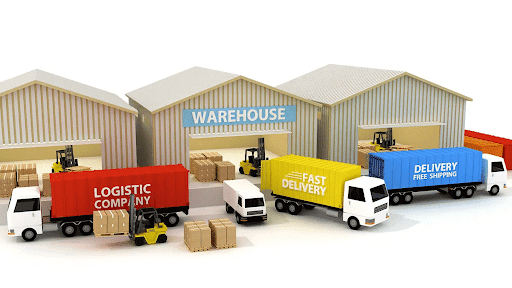How to Choose the Right Freight Forwarding Service

Logistics Isn’t Just Logistics Anymore
Imagine this: your shipment is delayed. Your customer is calling. Your product launch countdown is ticking. And your freight forwarder? Nowhere to be found.
For sourcing managers, Amazon sellers, and small business owners moving goods between China and the U.S., logistics isn’t just about shipping boxes. It’s about brand reputation, customer satisfaction, and staying competitive in a fast-moving global market.
That’s why choosing the right freight forwarding service isn’t just smart—it’s essential. In this guide, we’ll help you understand what to look for in a freight partner, how to match services with your business needs, and how to avoid common missteps that could cost you time, money, and trust.
Who This Guide Is For (Target User)
This article is for:
- Amazon FBA sellers who need reliable customs clearance and delivery to U.S. fulfillment centers
- eCommerce brands with seasonal launches or rapid turnaround
- Procurement managers at SMEs sourcing from Chinese factories
- First-time importers who feel overwhelmed by customs and shipping jargon
If you’re shipping internationally and need more than a tracking number—you need clarity, control, and confidence—this guide is for you.
Step 1: Understand Your Freight Needs First

Before evaluating freight forwarders, step back and assess your own business needs. You’ll save time, filter out poor-fit providers, and avoid misaligned expectations later.
Ask Yourself:
- What are you shipping? Fragile, oversized, or temperature-sensitive goods may require air freight or specialized handling.
- Where are you shipping to and from? Not all forwarders serve every route—especially if your shipment originates in a Tier-2 Chinese city or goes to a remote U.S. region.
- How often do you ship? Regular shipments may qualify for better pricing tiers or dedicated service teams.
- Is cost or speed more critical to your business? Some products (e.g. PPE, electronics) demand speed; others allow slower, cheaper options.
Pro Tip: Create a one-page brief before requesting quotes. Include:
- Shipment volume (monthly/seasonal)
- Preferred ports or addresses
- Delivery deadlines
- Special service needs (DDP, temperature control, etc.)
Step 2: Understand What a Freight Forwarder Really Does
Many businesses mistake freight forwarders for carriers. In reality, they’re logistics orchestrators who manage the entire shipping process from factory to final delivery.
A good forwarder will:
- Arrange pickup from the supplier
- Handle export documents (like commercial invoices, packing lists, and HS codes)
- Book ocean or air transport
- Clear goods through customs (at both ends)
- Manage delivery to warehouses or FBA centers
- Offer insurance, tracking, and regulatory advice

Example Scenario: You’re sourcing phone cases from Dongguan. GortoFreight picks up from your supplier, consolidates your cargo with others, books a container to Long Beach, clears customs, and delivers to your 3PL in Chicago—while you track everything online.
Step 3: When Air Freight Is the Right Choice
While ocean freight is cost-effective, it’s also slow. Click here for more information on Air freight, which fills the gap for businesses that value speed, precision, or high-value goods.
When to Use Air Freight:
- Product launches or flash sales
- Inventory emergencies or backorders
- Compact, high-margin items like electronics or accessories
- Locations far from major ports (faster with inland air + truck)
Use Case: An Amazon seller preparing for Prime Day runs out of inventory. Ocean freight takes 35 days. Air freight from Shenzhen to LAX arrives in 4 days, saves the sale, and boosts seller rankings.
Gorto Freight supports both scheduled and urgent air shipments from major Chinese cities to U.S. hubs with full customs support.
Step 4: What to Look for in a Freight Forwarder (User Demand Section)
Your ideal partner depends on your shipment type, growth stage, and service expectations—not just who quotes the lowest price.
Key Factors:
- Industry Experience
Has the provider handled your product category? Shipping iPhones ≠ shipping furniture. - Service Scope
Do they offer port-to-door, DDP, customs brokerage, or warehouse delivery? Check what’s included. - Digital Tools
Real-time tracking and document portals save time—and reduce stress. - Network Coverage
Can they handle both small and bulk shipments? Do they cover inland routes? - Customer Communication
Fast response times, proactive updates, and transparency matter—especially when things go wrong.
Step 5: Build a Partnership, Not Just a Transaction
Treat your freight forwarder as a long-term partner. When they understand your business, they’ll offer better service—and fewer headaches.
How to Collaborate Effectively:
- Share accurate product specs, timelines, and factory details early
- Plan for seasonal volume spikes in advance
- Regularly communicate upcoming launches or shifts in demand
- Be transparent about budgets and expectations
Pro Tip: Set up a shared Google Sheet or Slack channel for active projects. Quick access = fewer delays.
Step 6: Common Mistakes to Avoid
Many importers make these errors, especially when starting out:
- Chasing the lowest quote → leads to hidden costs, poor service
- Skipping customs questions → delays at clearance can ruin timelines
- Assuming door-to-door is standard → it’s not. Clarify!
- Working without a contract → misunderstandings = expensive mistakes
Better: Choose a freight partner with clear terms, defined scope, and responsive support.
Conclusion: Choose with Confidence, Ship with Clarity
A freight forwarder isn’t just a service provider—they’re your shipping partner, risk manager, and logistics translator.
So whether you’re just starting to import or optimizing an existing supply chain, make sure you:
- Define your shipping needs
- Understand what services are truly included
- Partner with someone who communicates clearly and delivers consistently
At GortoFreight, we help importers ship smarter—not just faster. With 15+ years of experience in China–USA freight, we offer:
- Transparent pricing (no hidden fees)
- Full-service support including customs and delivery
- Real-time tracking and bilingual communication
Need help choosing the right freight solution?
Request a free quote today at gortofreight.com and simplify your next shipment from China to the U.S.




